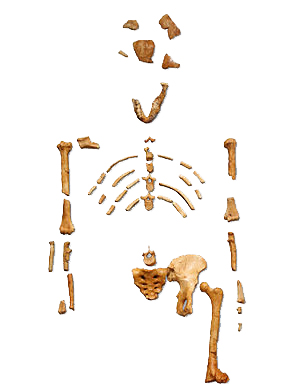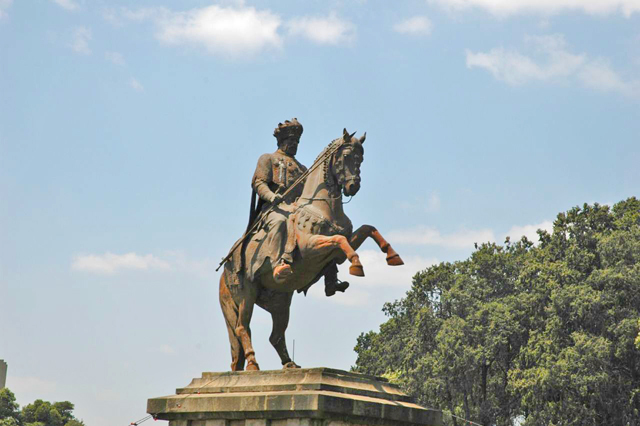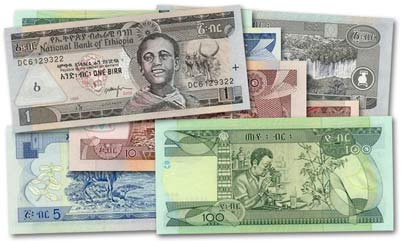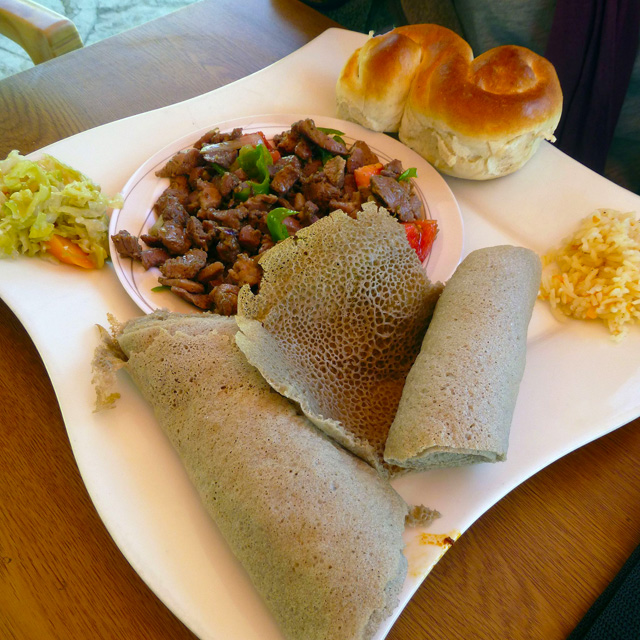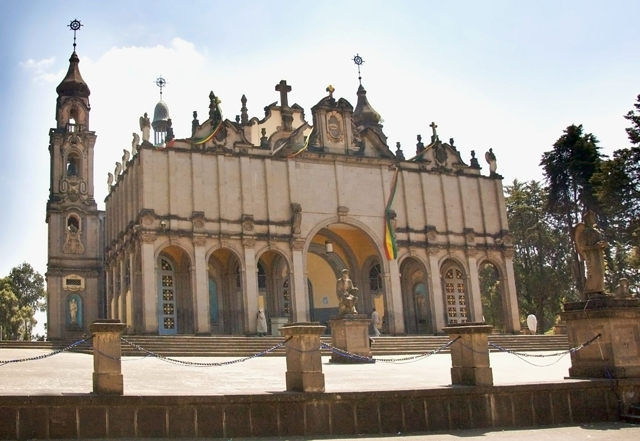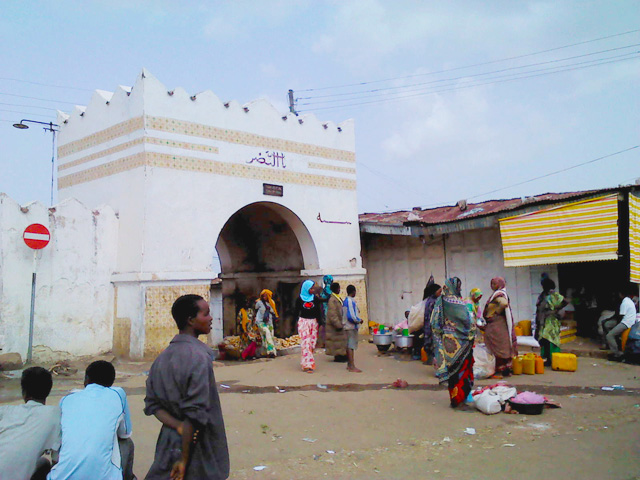About Ethiopia
History
Ethiopia is the oldest independent country in Africa and one of the oldest in the world. What are believed to be the oldest remains of a human ancestor ever found, which have been dated as being some five million years old, were discovered in the Awash Valley in Ethiopia. This beats the discovery of “Lucy”, a 3.2 million year old skeleton, who was unearthed in the same area in 1974.
The Greek historian Herodotus, of the fifth century BC, describes ancient Ethiopia in his writings, while the Bible’s Old Testament records the Queen of Sheba’s visit to Jerusalem where “she proved Solomon with hard questions”. Matters clearly went further than that because legend asserts that King Menelik – the founder of the Ethiopian Empire – was the son of the Queen and Solomon.
With a population of about 90 million, Ethiopia represents a melting pot of ancient cultures with Middle Eastern and African cultures evident in the religious, ethnic and language composition of its Semitic, Cushitic, Omotic and Nilotic peoples.
Ethiopia is a Federal Democratic Republic composed of 9 National Regional States (NRS) – Tigray, Afar, Amhara, Oromia, Somali, Benishangul-Gumuz, Southern Nations, Nationalities and Peoples Region (SNNPR), Gambella and Harari – and two administrative councils – Addis Ababa and Dire Dawa. The NRS and the Administrative councils are further divided into 62 zones and 523 woredas.
Addis Abeba (Capital City)
Addis Ababa is the largest city in Ethiopia and is also the capital city. It is the seat of the Federal Government of Ethiopia and lies on the central plateau at an altitude of 2,400 metres, 9 degrees north of the equator. Its average temperature is 16° C. Addis Ababa can be dated back to 1887 when Menelik decided to abandon his hill top site and chose the foothills to site his new settlement which his empress had already named Addis Ababa, the ‘New Flower’.
With Menelik’s drive and energy in the early 1900s, Addis Ababa continued to expand and is still rapidly growing.
Today it is host to the Organisation of African Unity and the United Nations Economic Commission for Africa. Seven other international organisations have their headquarters and branch offices in the capital, which is also the centre of commerce and industry. Manufacturing plants for steel fabrication, wood, tanneries, textiles, cement, leather goods and breweries are among the activities located in and around Addis Ababa.
Mount Entoto, Merkato (Biggest open market in Africa), Bole MedhaneAlem, Holy Trinity are some of the attractions in Addis Ababa.
Calendar
The Ethiopian year consists of thirteen months; twelve of 30 days each and an additional month of five or six days, depending on whether it is a leap year. The first month of the Ethiopian year is September (or Meskerem) and New Year’s Day takes place on what is the 11th September in the Western calendar.
| Ethiopian Month | Gregorian Month | Gregorian Equivalent Dates |
|---|---|---|
| Meskerem (month 1) | September (month 9) | September 11 – October 10 (begins September 12, during leap years) |
| Tikimt (month 2) | October (month 10) | October 11 – November 9 |
| Hidar (month 3) | November (month 11) | November 10 – December 9 |
| Tahsas (month 4) | December (month 12) | December 10 – January 8 |
| Tir (month 5) | January (month 1) | January 9 – February 7 |
| Yakatit (month 6) | Febuary (month 2) | February 8 – March 9 |
| Magabit (month 7) | March (month 3) | March 10 – April 8 |
| Miyazya (month 8) | April (month 4) | April 9 – May 8 |
| Ginbot (month 9) | May (month 5) | May 9 – June 7 |
| Sene (month 10) | June (month 6) | June 8 – July 7 |
| Hamle (month 11) | July (month 7) | July 8 – August 6 |
| Nehasa (month 12) | August (month 8) | August 7 – September 5 |
| Pagumiene (month 13) | September 6 – September 10 (ends September 11, during leap years) | |
Coffee
Ethiopian Coffee Ceremony Decouvrir Ethiopie TourEthiopia is the home of coffee. An intricate traditional coffee ceremony is performed in many households. This may also be seen in most of the larger hotels in Addis Ababa. The time devoted to the ceremony indicates how important the drink is to Ethiopians.
At the start of the ceremony a table is scattered with freshly-cut grass to give the fresh and fragrant scent of outdoors. A female attendant or the lady of the household sits on a low stool beside a charcoal brazier. She first lights a stick of incense to provide the right atmosphere. Guests are given a snack such as popcorn whilst the ceremony is proceeding. The green coffee beans are roasted in a pan and then ground with a pestle and mortar. Then the pot for boiling the coffee is produced, a round clay pot with a plump base and a long narrow neck and spout. After the water has been heated the coffee is added and brought to the boil. The coffee is poured into small, traditional cups and sugar is added. The coffee has a full-bodied flavour but it is not itself bitter.
Climate
There are two seasons in Ethiopia: in most of the country the dry season prevails from October until May with short rains in March; the wet season runs from June until the end of September. In the Omo and Mago parks however, in Southern Ethiopia, the seasons are different with the main rains from March to June, and shorter rains in November.
Although Ethiopia lies within 15 degrees north of the equator, owing to the moderating influence of high altitude, the central highlands, where most Ethiopian people live, generally enjoy a temperate and pleasant climate. In the highlands above 2,000 metres the temperature rarely exceeds 25°C in most of the country. In the lower lying areas (Awash, Omo and Mago parks), which experience sub-tropical and tropical climates, it can get considerably hotter. The temperature generally drops quite rapidly towards sunset.
Currency
The local currency is the Ethiopia Birr, made up of 100 cents. There are 1, 5, 10, 50 and 100 Birr Notes while the cents are in 5, 10, 25 and 50 cent coins.
Visitors may import a limited amount of foreign currency, and need to declare the amount to Customs on arrival. Foreign currency may only be changed at authorised banks and hotels and some Special Forex ATMs.
Nowadays, most international credit and debit cards are accepted in Hotels, Guest Houses, Restaurants, Bars, Major Supermarkets and other facilities.
Food and Drinks
Ethiopian Cuisine Food and Drinks Decouvrir Ethiopie TourThe national dish for most Ethiopians is injera, a flat, sour dough pancake made from a special grain called teff, which is served with either meat or vegetable sauces. Ethiopians eat these injera by tearing off a bit of injera and uses it to pick up pieces of meat or mop up the sauce.
Berbere, the blend of spices which gives Ethiopian food its characteristic taste can be hot for the uninitiated, although vindaloo or hot curry fans will not have any problem.
When eating national food Ethiopians eat together, off one large circular plate. Visitors and guests will have choice morsels and pieces of meat placed in front of them, and when eating doro wot, chicken stew, the pieces of meat are eaten last, after filling up on injera and sauce. You eat with your right hand, and should always wash your hands before eating.
Vegetarians should try “fasting food”, what Orthodox Christians eat during Lent and other fasting periods, and which is free of meat and animal products.
Language
Ethiopia is a land of enormous diversity and as a result Ethiopia has more than 80 languages and over 200 dialects. Amharic or Amharigna is the official language of Ethiopia although the government encourages local languages to be taught in schools. The working languages of the national/regional governments may differ according to regions. Other main languages include Oromigna and Tigrigna. English, French, Italian and Arabic are also widely spoken.
Religion
Ethiopian culture and tradition have been much influenced by both Christian and Muslim religions.
The Ethiopian Orthodox Church is the largest religious group (45%), followed by Sunni Muslims (35%) and those with traditional beliefs (11%). An additional 9% are listed as ‘others’. Catholicism and Ethiopian evangelism (Mekane Yesus) are also considered to be important religions in Ethiopia.
Religion has always been a major influence in Ethiopia and no other sub-Saharan country in Africa can trace its origins as far back. Ethiopia is mentioned many times in the Bible and in the Qur’an.
Time
Ethiopia is in the +3 hrs GMT time zone. It is worth bearing in mind, however, that in addition to this Ethiopia also has its own time. This is based on the conception that the Ethiopian day is constituted of roughly 12 hours of daylight, starting at 6.00am and roughly 12 hours of darkness, starting at 6.00pm. So, 7.00am is 1.00am Ethiopian time.
Urban Ethiopians often use both systems as appropriate. Nevertheless, in general, when asking about dates and times, it is always worth checking which system is being used!
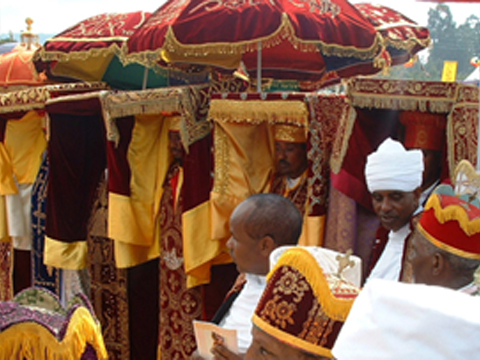
Festivals in Ethiopia
Ethiopia still retains the Julian calendar, in which the year…….
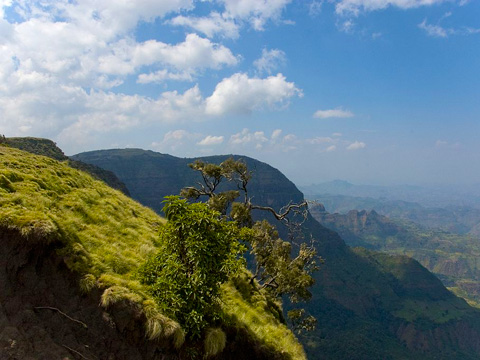
National Parks
Simien Mountains National Park is one of the national parks of Ethiopia…..
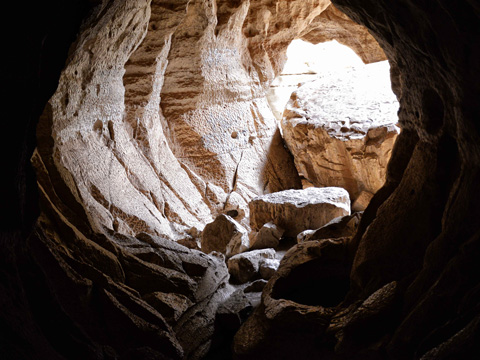
Natural Attractions
The Semien Mountains located in northern Ethiopia…..

Historical Attractions
Lalibela is a town in northern Ethiopia famous for monolithic rock……

Cultural Attractions
The Dorze are a small ethnic group inhabiting the Gamo Gofa Zone …..

